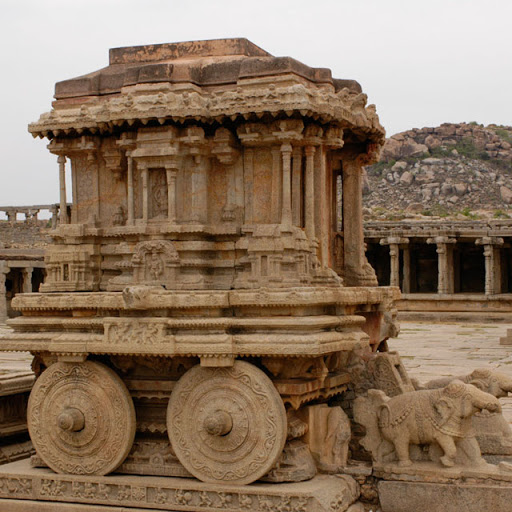
Vijayanagara Empire: Unveiling the Glorious History and Artistic Splendours
Introduction
The Vijayanagara Empire, which thrived in Southern India from the 14th to the 17th centuries, stands as a testament to the grandeur of Indian history and culture. Known for its impressive architecture, magnificent sculptures, and vibrant paintings, the Vijayanagara Empire left an indelible mark on the artistic landscape of the subcontinent. In this special article, we will delve into the captivating history of the Vijayanagara Empire, tracing its rise, exploring its cultural and artistic aspects, and celebrating its enduring legacy.
I. The Rise of the Vijayanagara Empire
The foundation of the Vijayanagara Empire can be traced back to the Sangama Dynasty, established by Harihara I and Bukka Raya I. This section will shed light on the early rulers, their strategic alliances, and their endeavors to establish a powerful empire in the Deccan region. We will also explore the significant contributions of the Sangama Dynasty in laying the foundation for the Vijayanagara Empire.
II. Vijayanagara: City of Splendor
At the heart of the Vijayanagara Empire was its magnificent capital city, Vijayanagara. Renowned for its architectural marvels and urban planning, this section will take a closer look at the city’s layout, monumental structures, and the exceptional craftsmanship that adorned its temples, palaces, and public buildings. The artistic aspects of Vijayanagara, including the iconic Virupaksha Temple, the grandeur of the Vitthala Temple complex, and the exquisite carvings at the Krishna Temple, will be explored in detail.
III. Sculpture and Iconography
The sculptural heritage of the Vijayanagara Empire is legendary. Sculptors and artisans of this era produced intricate and awe-inspiring stone carvings, bronze sculptures, and iconographic representations. This section will examine the exquisite sculptures found in Vijayanagara, including the monolithic statues of Hampi, the famous Lepakshi Nandi, and the intricate details of the Hazara Rama Temple. We will also explore the religious, mythological, and cultural significance of these sculptures and the technical mastery demonstrated by the artisans.
IV. Literature and Music
The Vijayanagara Empire was not only renowned for its visual arts but also celebrated for its rich literary and musical traditions. This section will delve into the literary works produced during this period, including the famous Sanskrit epic, the “Ramayana,” composed by the poet-philosopher, Valmiki. We will also explore the patronage of music, with a focus on the Carnatic music tradition, which flourished under the Vijayanagara Empire. The contributions of celebrated composers like Purandara Dasa and Annamacharya will be highlighted.
V. Frescoes and Murals
Another remarkable artistic aspect of the Vijayanagara Empire was its vibrant frescoes and murals. This section will shed light on the exquisite wall paintings found in various sites, such as the Vitthala Temple and the Hazara Rama Temple. We will explore the themes depicted in these paintings, including mythological narratives, courtly scenes, and religious symbolism. The techniques employed by the artists and the preservation efforts to protect these delicate artworks will also be discussed.
VI. Legacy and Heritage
Despite the eventual decline of the Vijayanagara Empire, its legacy continued to influence subsequent kingdoms and artistic traditions in Southern India. This section will examine the impact of the Vijayanagara Empire on later dynasties, such as the Nayakas and the Mysore Kingdom. We will also explore the efforts to preserve and restore the architectural wonders of Vijayanagara, including the UNESCO World Heritage site of Hampi. The enduring legacy of the Vijayanagara Empire in shaping the cultural fabric of the region will be celebrated.
Conclusion
The Vijayanagara Empire, with its awe-inspiring architecture, mesmerizing sculptures, and vibrant artistic traditions, remains an integral part of India’s cultural heritage. From the grandeur of its capital city to the intricate craftsmanship displayed in its temples and sculptures, the Vijayanagara Empire stands as a testament to the artistic brilliance and cultural splendor of a bygone era.
